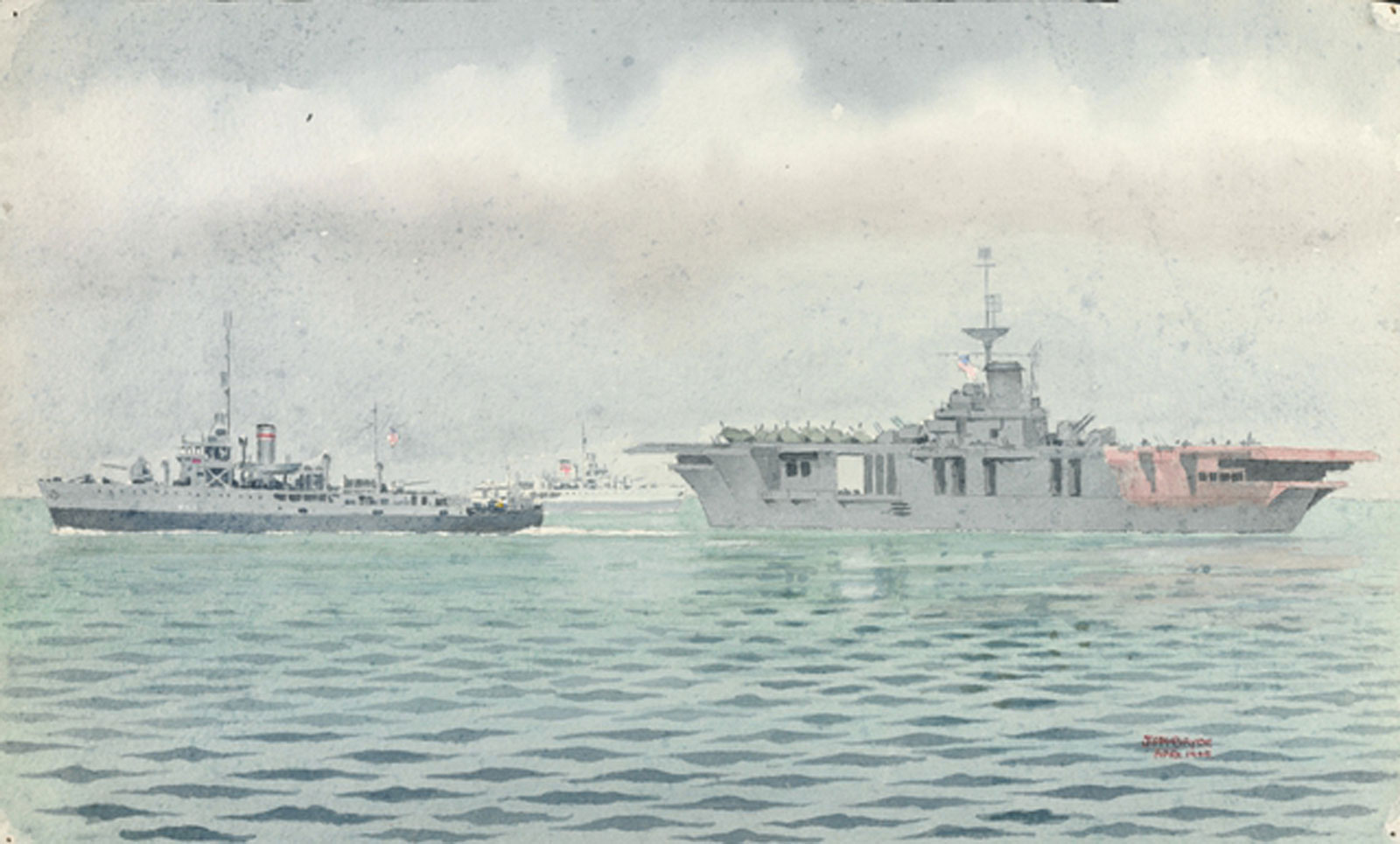HMAS Whyalla (left) and Kalgoorlie (centre) with USS Randolph (right)

This watercolour depicts HMAS Whyalla and Kalgoorlie, vessels of 21st Mine Sweeping Flotilla (MSF) and USS Randolph at Ulithi, Caroline Islands, Philippines in March 1945. Whyalla is seen at the left of the composition, Kalgoorlie in the centre background and the damaged American aircraft carrier Randolph is on the right. The Randolph was one of several American aircraft carriers damaged in action off the Southern coast of Japan. It was attacked by a Japanese Kamikaze at Ulithi on 11 March 1945. The plane struck the Randolph in the stern just below the level of the flight deck near where roughly 200 men were watching a movie on the Hangar Deck. Twenty-seven men were killed and 105 were wounded. Randolph was repaired at Ulithi without having to retire further east and so was able to re-join the fleet in less than a month. This drawing shows the Randolph from the port stern quarter. The fire that followed the attack has removed the paint from the ship’s hull, and the hull has flash corroded – hence the red/brown colour on the painting.
- About John McBryde
Little is known of John Smyth McBryde who was born in Port Logan, Scotland on 30 May 1896.
During World War 2 he served in numerous ships including HMAS Ipswich.
At the time of Cessnock’s collision on 8 May 1943 HMAS Ipswich was serving in the same theatre of operations. That is, on escort and anti-submarine patrol duty in the western Indian Ocean and between the Persian Gulf and India. In May 1943 she was transferred to the Mediterranean for service as a unit of the 21st Minesweeping Flotilla. In the Mediterranean she took part in the Sicily campaign and on escort and patrol duty she steamed over a wide area of the Mediterranean.
There is a strong possibility that John McBryde either witnessed the collision or had first-hand knowledge of this event in the Red Sea.
- About HMAS Whyalla (l)
HMAS Whyalla was one of fifty-six Australian Minesweepers (commonly known as corvettes) built during World War II in Australian shipyards as part of the Commonwealth Government's wartime shipbuilding programme.
Whyalla went into service on escort and patrol duty on the Australian east coast. She was in Sydney Harbour on the night of 31 May/1 June 1942 when the Japanese midget submarine attack took place and was one of several ships allocated as escorts when Australian coastal convoys were instituted on 8 June 1942.
More reading
- Additional resources for John McBryde
- Additional resources for HMAS Whyalla (l)



